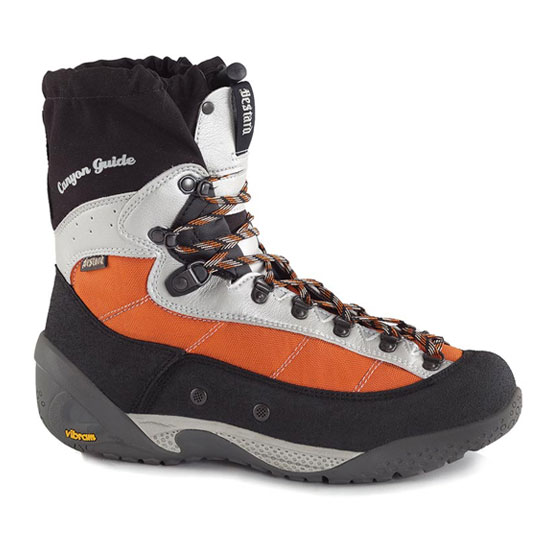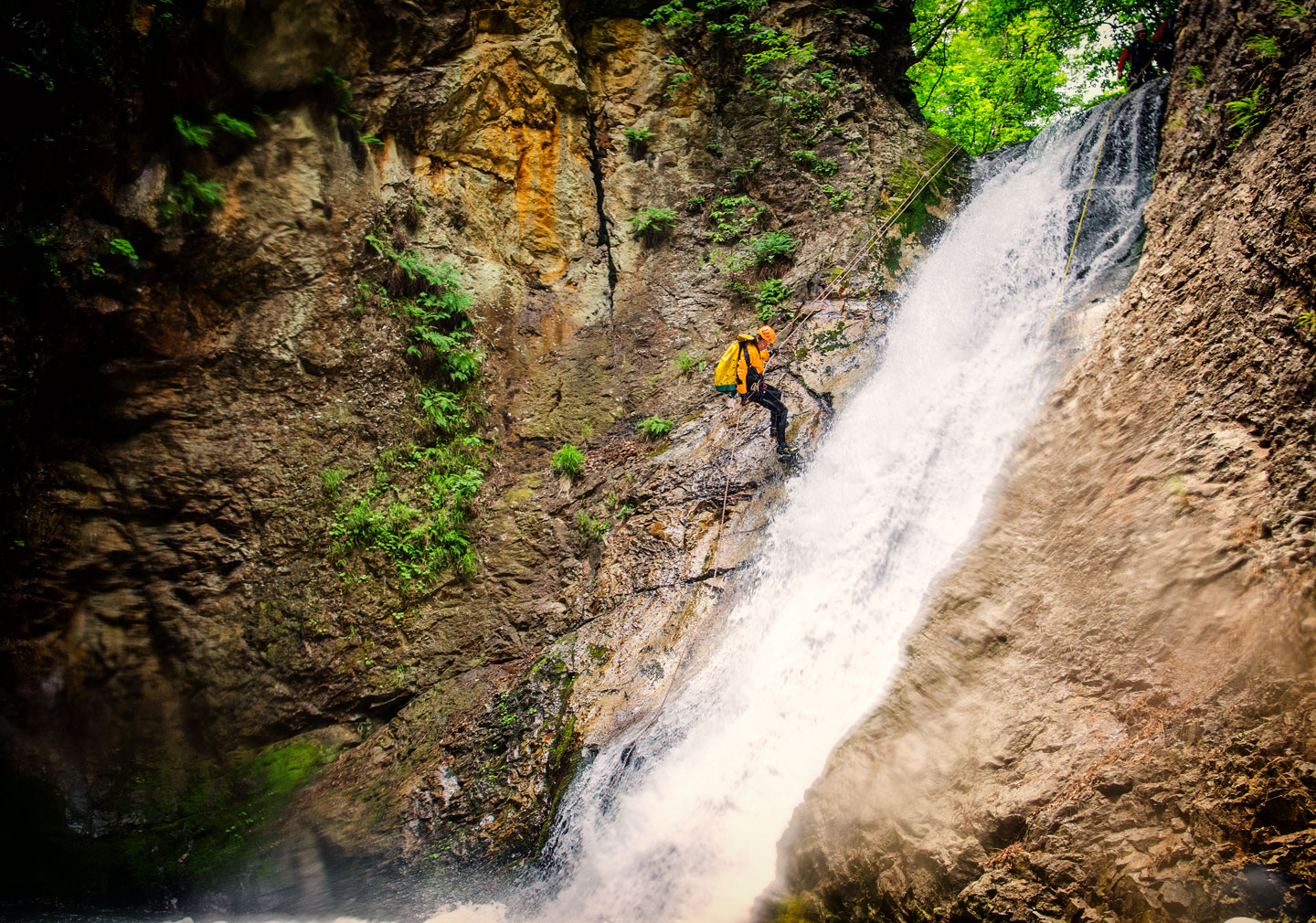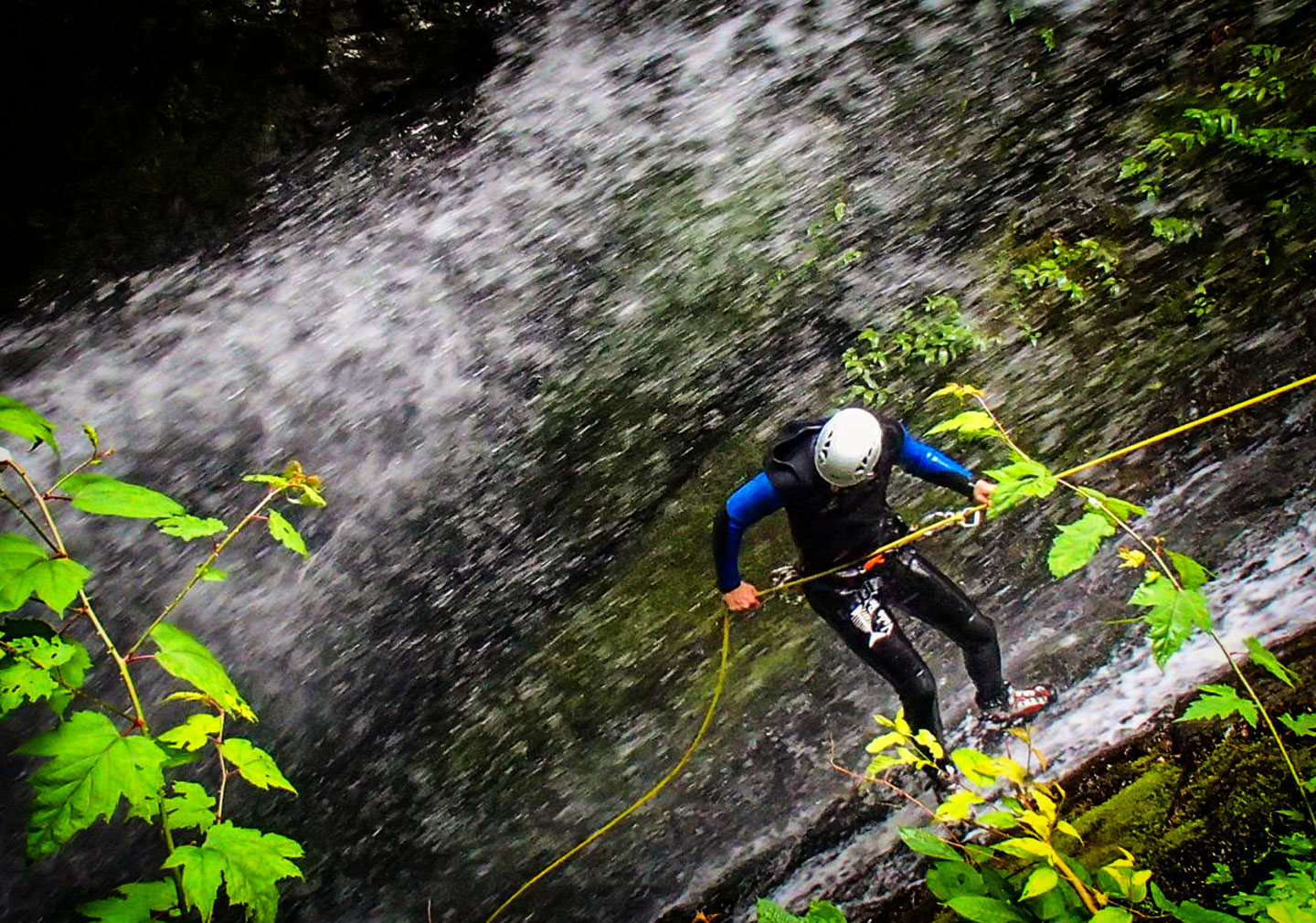Canyoning Shoes
A good canyoning shoe makes all the difference allowing you to move quickly and safely. Until a few years ago shoes were not expressly designed for canyoning but currently there are several manufactures that design products specifically designed to meet specific needs.
Three of the most common shoes available on the market today are listed below. These shoes have consistently been tested and used in many canyons around the world.

Bestard Canyon Guide
The Bestard Canyon Guide is more like a traditional boot with a lace up closure. With a very good grip made by Vibram and is super light and comfortable.

FiveTen Canyoneer
The Five Ten Canyoneer is considered a good versatile shoe for canyoning. Good grip on wet surfaces.

Adidas Hydro Pro
Latest entry on the market is the Adidas Hydro Pro. The features are similar to a Five Ten Canyoneer, with a good sole and a different lacing system.





